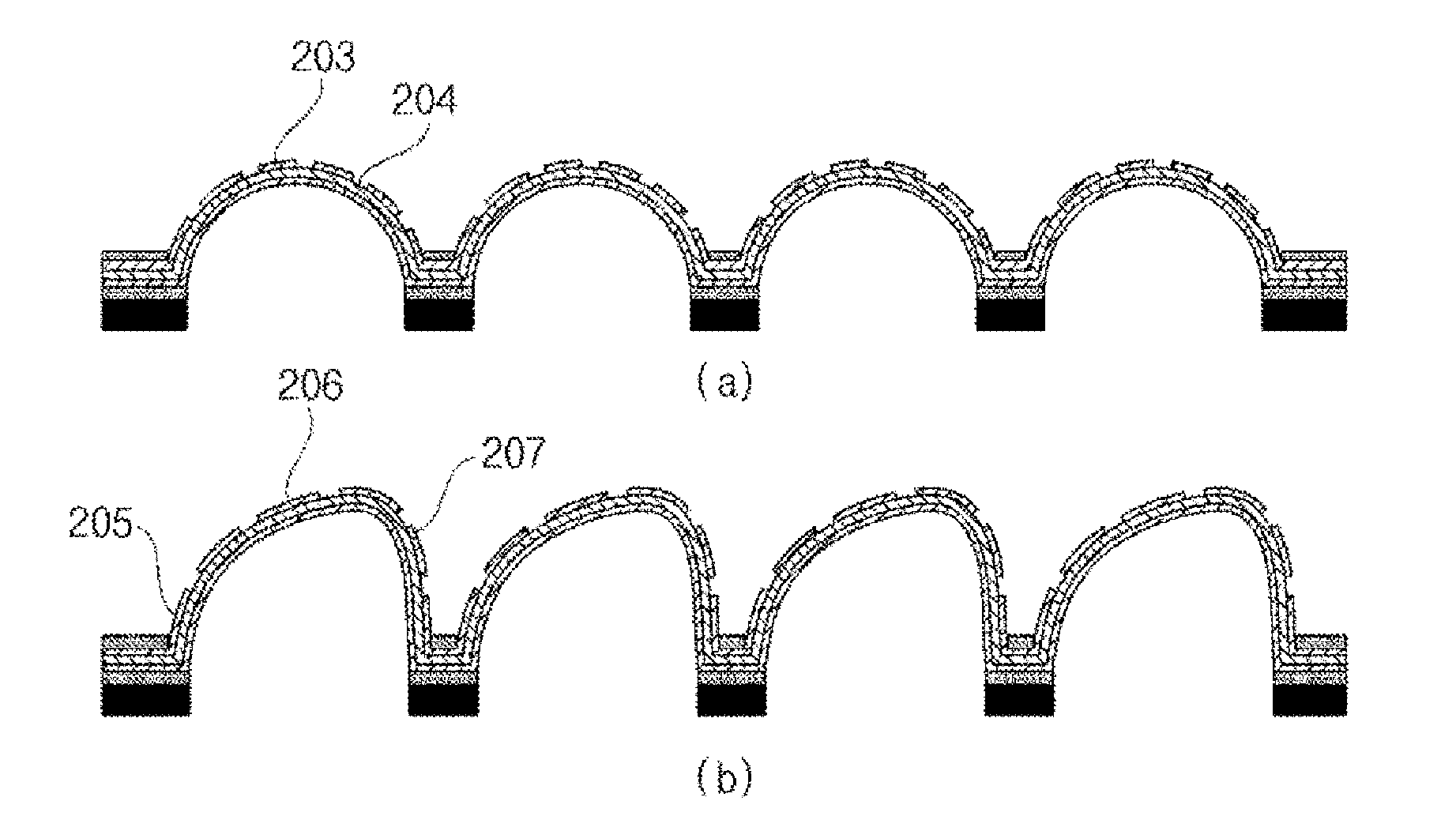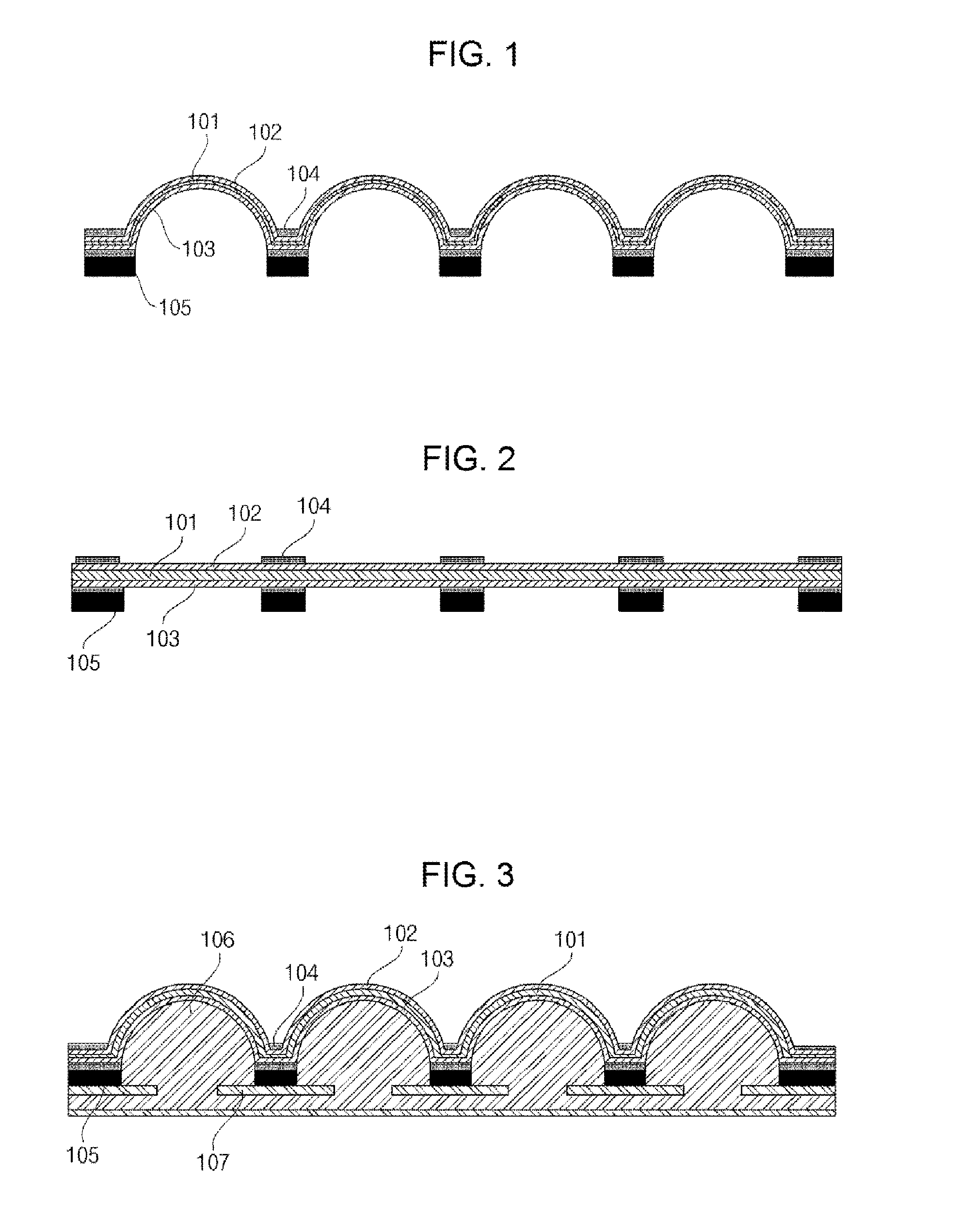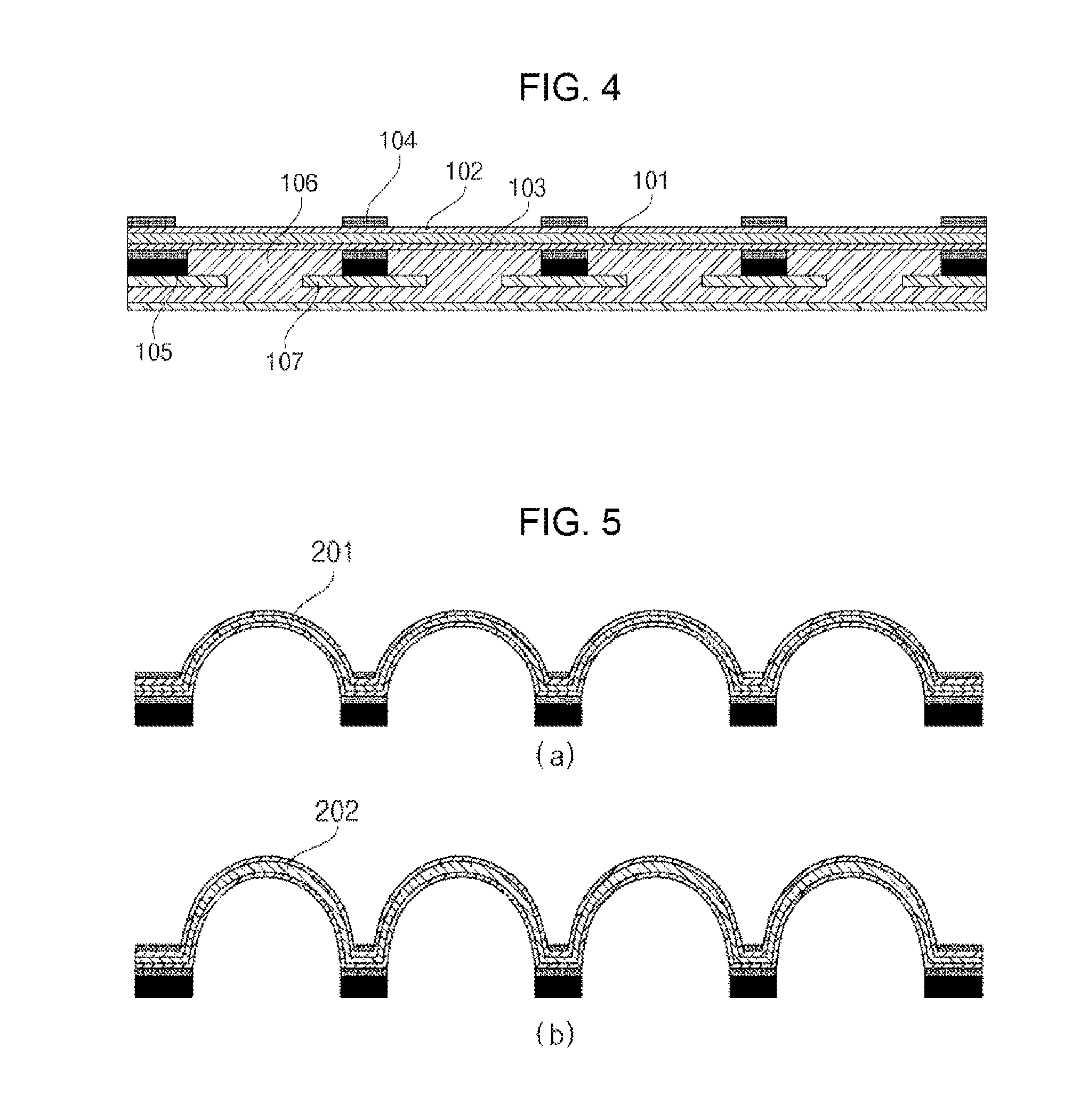Microlens array and method for fabricating thereof
a microlens array and array technology, applied in the field of microlens arrays, can solve the problems of viewer's eyes fatigue, viewer's dizziness, and inability to perform various functions depending on the purpose of a user on a single electronic device, and achieve the effect of reducing/enlargering a specific par
- Summary
- Abstract
- Description
- Claims
- Application Information
AI Technical Summary
Benefits of technology
Problems solved by technology
Method used
Image
Examples
Embodiment Construction
[0042]Hereinafter, a microlens array according to embodiments of the present invention and a method for fabricating the same will be described in detail with reference to the accompanying drawings. The necessary part to understand behaviors and functions according to the present invention will be described in more detail.
[0043]It will be understood that constitutional parts having identical names may be assigned with different reference numbers according to the Figures or assigned with identical reference numbers despite Figure numbers are different. However, it does not mean that each constitutional part has different characteristic function according to embodiments or has identical characteristic function in different embodiments so that the function of each constitutional part will be determined based on the description of each constitutional part in the corresponding embodiments.
[0044]The present disclosure is to provide a microlens array having variable optical properties by us...
PUM
| Property | Measurement | Unit |
|---|---|---|
| voltage | aaaaa | aaaaa |
| pressure | aaaaa | aaaaa |
| shape | aaaaa | aaaaa |
Abstract
Description
Claims
Application Information
 Login to View More
Login to View More - R&D
- Intellectual Property
- Life Sciences
- Materials
- Tech Scout
- Unparalleled Data Quality
- Higher Quality Content
- 60% Fewer Hallucinations
Browse by: Latest US Patents, China's latest patents, Technical Efficacy Thesaurus, Application Domain, Technology Topic, Popular Technical Reports.
© 2025 PatSnap. All rights reserved.Legal|Privacy policy|Modern Slavery Act Transparency Statement|Sitemap|About US| Contact US: help@patsnap.com



